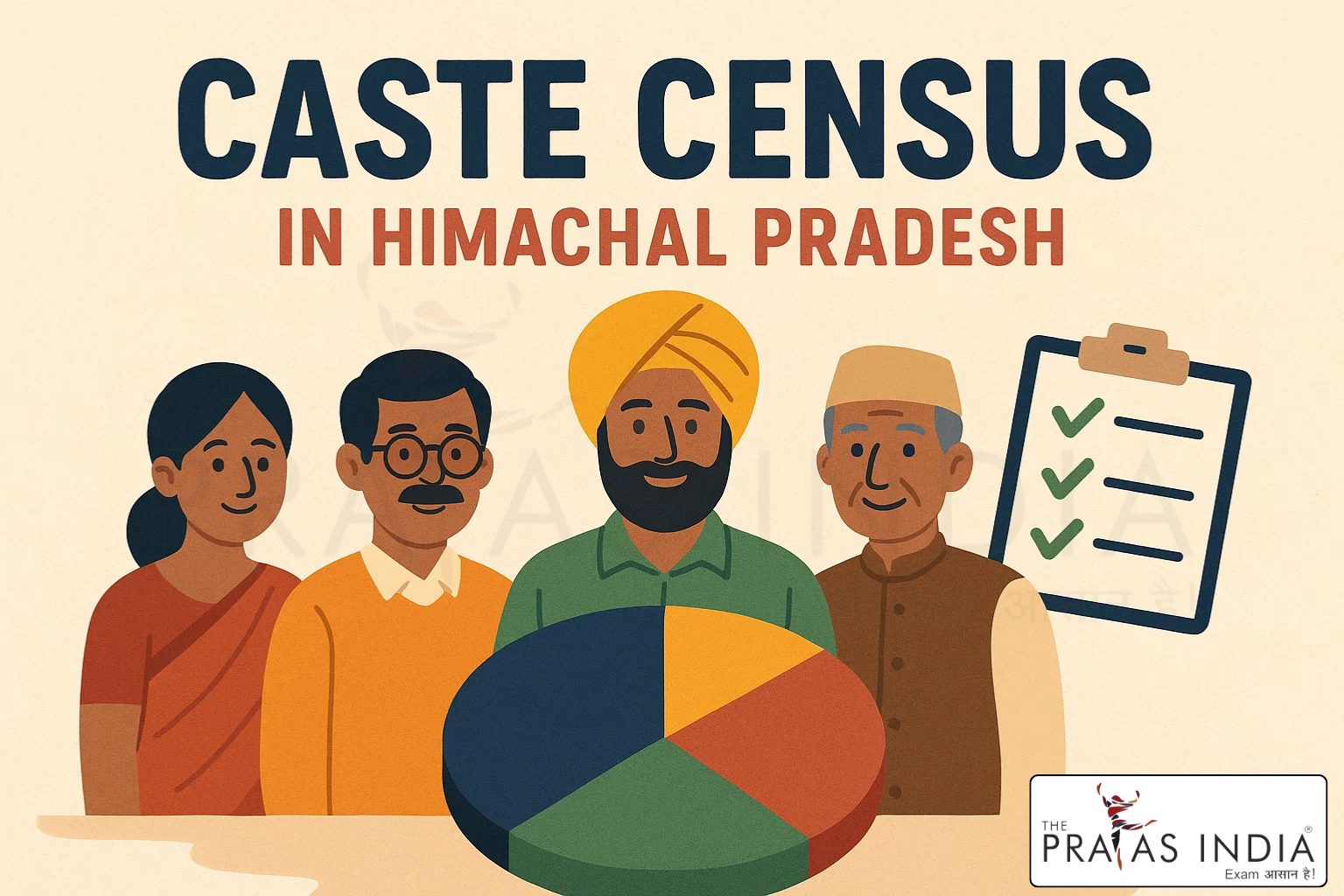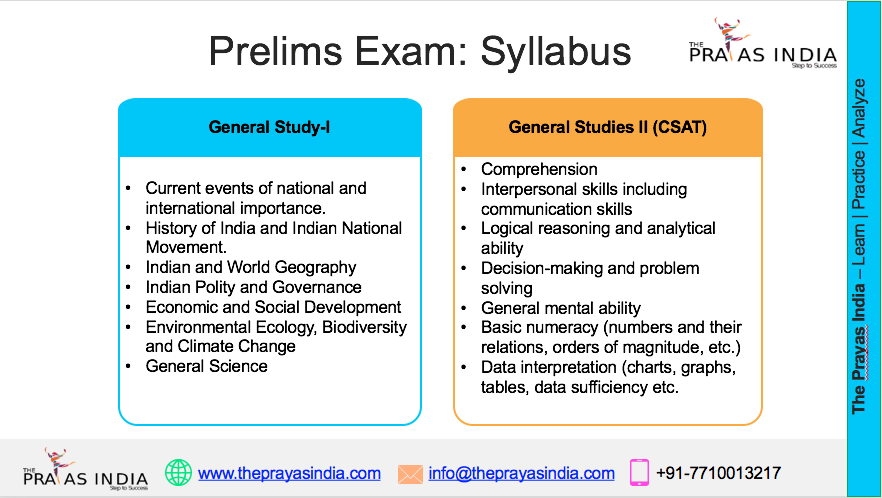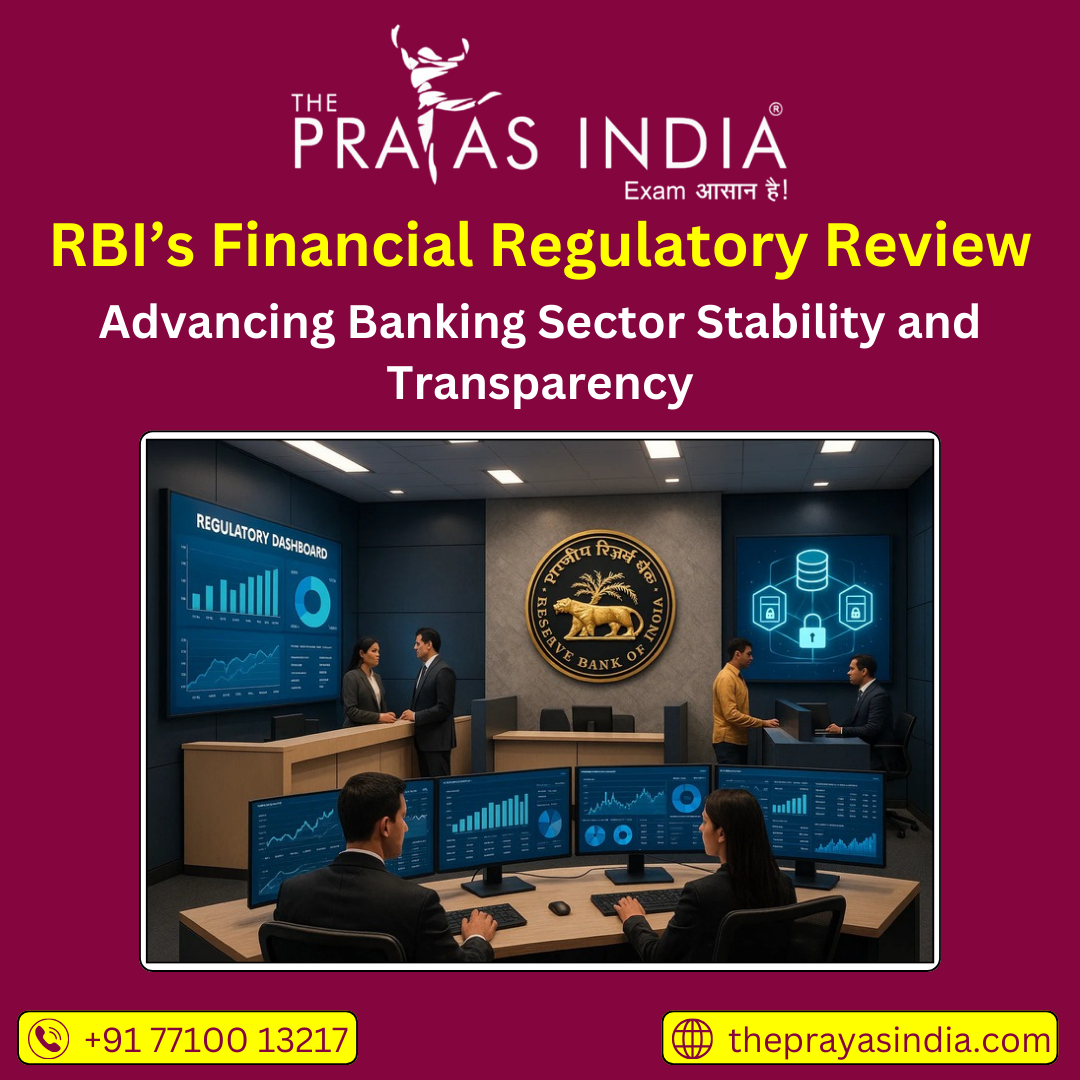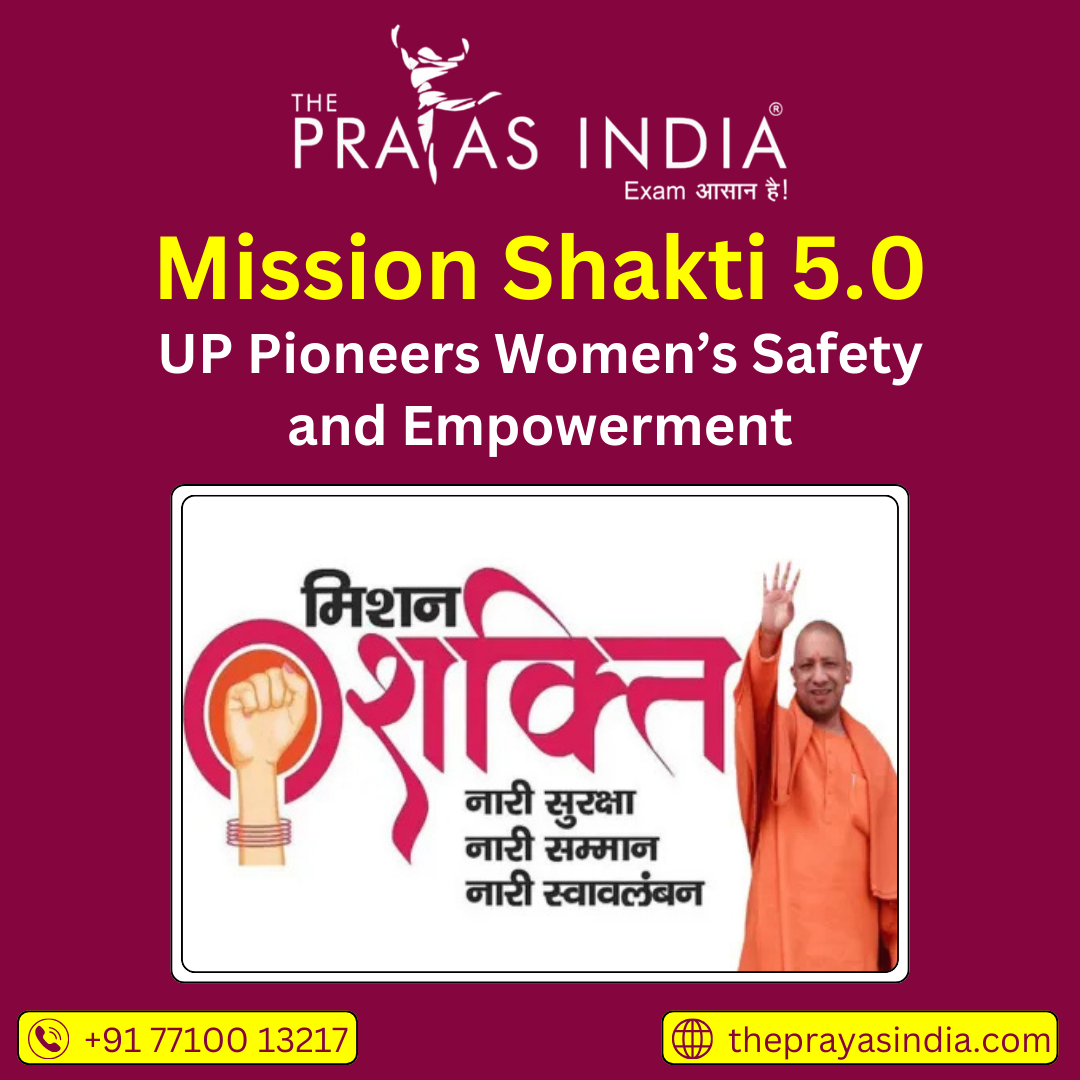Caste Census in Himachal Pradesh: Data, Disputes & Political Dimensions
The Government of India has announced the commencement of a detailed Caste Census in Himachal Pradesh, scheduled to begin in 2026. This will be the first comprehensive caste-based enumeration in the state since 1931, aimed at capturing accurate demographic and socio-economic data. Starting in snow-bound regions due to their logistical constraints, the exercise will expand to the rest of the state by 2027.
The census is poised to bring significant insights and debates—not just on the caste composition of Himachal, but also on its political and policy implications. As UPSC and other competitive exam aspirants, understanding the multidimensional significance of this move is crucial.

🧾 Caste Composition in Himachal Pradesh
Himachal Pradesh has a total population of approximately 77.56 lakh. The state’s social structure includes:
-
Scheduled Castes (SCs): ~25%
-
Other Backward Classes (OBCs): ~13.52%
-
Scheduled Tribes (STs): ~5.71%
There are 57 castes recognised as SCs in the state, with high concentrations in districts like Kangra and Mandi. The Hattee community from the Trans-Giri region in Sirmaur was granted Scheduled Tribe status in 2023, further complicating the social dynamics.
🏠 Census Methodology
The caste census will be carried out by state government staff, including teachers, anganwadi workers, and trained enumerators. The process will involve:
-
Door-to-door surveys using a combination of digital tools and paper forms
-
Verification of caste and socio-economic data through government records
-
Special focus on gathering authentic data from snow-bound and hard-to-reach areas
This approach ensures inclusion and accuracy, especially in areas traditionally underrepresented in data collection.
⚖️ Legal and Social Disputes
The newly accorded ST status to the Hattee community has triggered controversy. Several SC and OBC groups have challenged the inclusion, fearing dilution of existing reservation benefits. The matter is currently under review by the Himachal Pradesh High Court, which has placed a stay on the ST notification, with hearings set for July 2027.
This legal tussle could potentially affect the census process, especially if judicial directives alter existing community classifications.
🗳️ Political Implications
Himachal Pradesh has 68 Assembly constituencies, of which:
-
17 are reserved for SCs
-
3 are reserved for STs
While caste-based reservation is a factor in candidate selection and policy formulation, political experts argue that regional identity and local issues often outweigh caste in Himachal’s politics. However, others believe the fresh caste data could:
-
Influence welfare policies
-
Guide reservation adjustments
-
Realign community-based political outreach
As this is the first caste census in nearly a century, its outcomes may have long-term electoral and policy consequences, especially in resource allocation and representation.
📚 Relevance for UPSC & Competitive Exams
This topic connects to several core areas of the UPSC syllabus:
GS Paper I – Indian Society
-
Caste and social stratification
-
Diversity of India
-
Role of caste in contemporary politics
GS Paper II – Governance & Polity
-
Role of government institutions in data collection
-
Policy implementation based on demographic data
-
Reservation policy and affirmative action
GS Paper III – Development
-
Inclusive growth and social justice
-
Welfare schemes and targeted benefits
Essay & Ethics
-
Caste vs Class: Modern India’s evolving social base
-
Equality vs Equity: Ethical dilemmas in welfare distribution
✅ Conclusion
The Caste Census in Himachal Pradesh is not just an administrative exercise—it’s a social audit, political indicator, and policy tool. It reflects India’s ongoing journey to understand its own diversity more scientifically and equitably. The debates around inclusion, benefits, and political implications show how deeply caste continues to influence modern governance.
At The Prayas India, we equip aspirants to analyse such complex topics holistically—connecting current affairs with constitutional values, policy-making, and real-world impact. Stay updated, stay aware, and prepare smartly for every challenge.




![Prayas-तेजस [UPSC CSE Sociology Optional] – Online & Offline](https://theprayasindia.com/wp-content/uploads/2025/09/Prayas-तेजस-UPSC-CSE-Optional-Subject-The-Prayas-India-300x300.png)
![Prayas-सूत्र [UPSC CSE Materials (Hardcopy)]](https://theprayasindia.com/wp-content/uploads/2025/09/Prayas-सूत्र-UPSC-CSE-Study-Materials-Hardcopy-The-Prayas-India-300x300.png)
![Prayas-मंत्रा [UPSC CSE CSAT]](https://theprayasindia.com/wp-content/uploads/2025/09/Prayas-मंत्रा-UPSC-CSE-CSAT-The-Prayas-India-300x300.png)
![Prayas सारथी [UPSC CSE One on One Mentorship]](https://theprayasindia.com/wp-content/uploads/2025/09/Prayas-सारथी-UPSC-CSE-One-on-One-Mentorship-The-Prayas-India-300x300.png)










